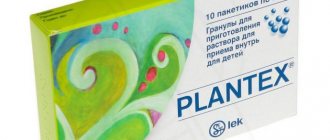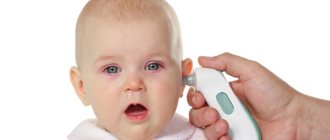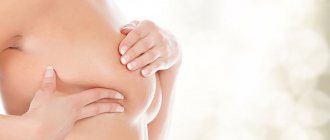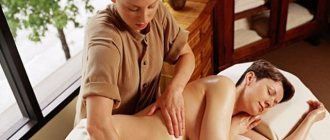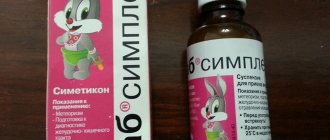Preparation for the procedure
To do this, you just need to carefully observe the child for some time and perform simple manipulations.
Perhaps the main signs indicating hypertonicity are restless behavior and nervousness ; when the baby cries, the chin trembles. Symptoms of increased muscle tone also include:
- Periodic intense regurgitation.
- Restless and short-term sleep, the child wakes up with the slightest noise.
- The characteristic positions that children take when sleeping are their heads thrown back, legs and arms connected. If you try to separate the limbs, with hypertonicity the baby will resist and may wake up and cry .
- The child throws his head back and arches his whole body when he cries.
You can carefully take the baby under the arms, lower his legs to the floor and tilt his torso slightly.
A child who feels well will place his entire foot on the floor, but with muscle hypertonicity he will touch the floor with his toe.
Similar reactions occur in completely healthy children, and only a pediatric neurologist can definitively diagnose hypertonicity.
Experts point to several possible causes of muscle tension: hemolytic disease of the baby, incompatibility of blood groups or Rh factors, malfunctions in the baby’s nervous system.
Pathologies of the nervous system, in turn, can be caused by:
- Chronic intoxication of a woman during pregnancy due to illness.
- Constant tension in the muscles of the uterus during pregnancy.
- In cases where pregnancy occurred simultaneously with treatment of acute infectious diseases.
- Threatened miscarriage, difficult pregnancy.
- Labor that is too long or too fast.
- Intense toxicosis in the first or last stages of pregnancy.
- Poisoning of the fetus as a result of smoking and drinking alcohol by a pregnant woman.
- Hypoxia of the child’s brain during childbirth or pregnancy.
- Chronic diseases of the mother.
- Improper execution of the incision during caesarean section.
Advantages and disadvantages
We should talk about the pros and cons of massage to reduce tension after the functionality of this procedure has been determined.
The main benefits of massage for increased muscle tone in a newborn:
- complex beneficial effect on all systems and organs of the baby;
- has virtually no contraindications.
A relaxing massage of the whole body or individual parts has no negative aspects in the absence of contraindications. If the massage is performed incorrectly, then negative aspects may appear , for example, in the case of inappropriate technique, the baby may receive not a relaxing, but a tonic massage and, as a result, overstimulation.
Sometimes massage alone cannot cope with some diseases and it is necessary to use a number of additional physiotherapeutic procedures, and in difficult cases, also drug treatment. In general, a relaxing massage performed by a mother or a specialist has practically no disadvantages, if possible contraindications are excluded. The latter are determined by the doctor and are of a purely individual nature.
Therapeutic massage for hypertension
Hypertonicity is usually diagnosed in children of one month of age. Only in the most severe cases do doctors prescribe drug treatment; the most common prescriptions are physiotherapy, therapeutic massage and therapeutic exercises.
The ultimate goal of all procedures is to relieve muscle tension and completely relax the muscles. It is advisable to carry out the first course of therapeutic massage with the involvement of specialists (or at least under their supervision).
Foot massage
- It starts with the child's left leg. With your left hand we hold the ankle joint, placing it between the index and middle fingers.
- At this time, we massage with our right hand, starting stroking movements from the foot. We gradually rise to the lower leg, massage the side, then the front part of the thigh. After massaging the thighs, massage the groin area for two to three minutes. Then we start all over again, from the foot. We repeat stroking the child’s feet 7-10 times.
- After stroking, we begin rubbing the same areas. Rub with fingertips, spiral and straight movements from bottom to top and vice versa.
- Then gently knead the same area by pressing.
- We massage the foot, stroking it and moving from the toes to the heel. Gently press the area of the foot under the middle finger with your index finger and move along the outer arch. Usually, this will straighten the baby’s fingers; this exercise should be repeated 5-7 times.
- We rub the child’s foot with our thumb, drawing a figure eight.
- We knead the foot with gentle pressure from the thumb.
- We stroke the outer side of the foot from the toes to the ankle with the middle and index fingers.
- We rub the same area with various movements: straight, spiral, etc.
After completing a set of exercises, we take the child’s leg with our right hand. In this case, the big toe should be on the inside of the foot (under the toes), and the rest on its outside.
With our left hand we fix the baby’s knee and bend and unbend the baby’s leg 5-6 times so that the knee and hip joints work. Children have problems with hip joints, how to deal with dysplasia with massage and gymnastics.
The child’s right leg is massaged in the same order. After you have finished massaging your legs, you need to bend them several times, holding your knees and slightly pressing on your stomach.
Then the knees need to be spread apart, while the feet should remain together. We make several smooth movements, rubbing the child’s feet against each other.
Buttocks and back massage
After massage exercises on the legs, we begin to massage the back. We turn the child onto his stomach.
Rub and knead the skin with light movements of your fingers. Then we stroke the back, starting from the neck and going down to the lower back.
We rub and knead the gluteal muscles; light pressure and pinching are recommended. Very carefully, without causing pain to the child .
Gymnastics for hypertension in infants
With increased muscle tension, therapeutic exercises are just as necessary as massage and no less effective. Some exercises:
- Wiggle . This exercise can be done by holding the child under the arms and gently rocking him. It can be performed in both vertical and horizontal positions. It is recommended to do it in water when the child is washed in the bath.
- On the ball . Placing the baby with his stomach on the ball and holding him by the legs and back, gently rock him in different directions. Movements should be very smooth. When your child gets used to this exercise, try stretching his arms forward a little.
- Flexion and extension of the arms . These exercises need to be done in all possible positions - placing the baby on his stomach or on his side (we move the bent arms left and right, back and forth) or on his back (straightened arms are spread to the sides, crossed, raised up, rotational movements are made).
- Crawling . The child himself does not yet know how to crawl, but by placing him on his stomach and helping him move his arms and legs, you are thereby performing an effective gymnastic exercise.
- Spreading the legs to the side . You will most likely encounter resistance from the child, so this exercise should be done very carefully, without being too persistent.
Gymnastics will also benefit a completely healthy baby.
Cough massage for children as an effective method of sputum removal.
Read all about the technique and benefits of vibration massage for coughs for children here: https://vsetelo.com/dt-bolezni/kashel/vibracionnyj-massazh.html
Definition of dystonia
To determine muscular dystonia syndrome in newborns, a visual examination of the child is performed. The muscles should be developed evenly on both sides. The baby is placed on his stomach and the symmetry of the folds is compared. The child's body should be straight, no distortions are observed. Deviations in these parameters indicate the presence of SMD.
The newborn must be placed on his back and lifted by the arms. First, they should straighten at the elbow joints, and then it should rise a little. In the absence of such a sequence, it can be assumed that the infant has a syndrome.
When lying on his back, the child's legs are bent and pressed. It is necessary to straighten the legs for a few seconds and lower them; a baby with hypotension will not be able to immediately return them to their original position.
A newborn in your arms on his tummy should raise his head and keep it level with his body.
Children's general relaxing massage
In order to bring the baby's muscle tone back to normal and help the natural development of the entire musculoskeletal system, you should do a relaxing massage daily.
First, we massage the child’s feet, stroking and moving from the heel to the toes.
We move on to stroking the baby’s legs; from the shin we rise to the thigh, massage the thigh with smooth circular movements of the fingers. We massage the baby’s second leg in the same way.
The next stage is a shoulder and chest massage. With light stroking movements we massage the shoulders, then the chest, lower ourselves onto the left hand, massage it. Then the right one.
After we have relaxed the arm muscles, we massage the stomach: we stroke it with light pressure, moving clockwise around the navel.
Then we do a light acupressure facial massage. Using your fingertips, knead the skin on your face from the middle of your forehead to the corners of your lips.
Symptoms of hypertension, why it is dangerous for a child
Timely detection of hypertonicity is very important, because it can indicate serious neurological diseases. The sooner you start treating them and carry out massage for hypertonicity, the greater the chance that the child will have a full life. Symptoms of hypertension can be determined independently in a baby:
- Lying on his back, the child throws his head back and tightens his arms and legs;
- Resting his legs on a hard horizontal surface, the baby stands on his toes;
- The baby's sleep is short and restless;
- It is impossible to completely separate the baby's legs - he cries, and muscle resistance is felt. When you try again, the tension increases;
- The child regularly spits up, bright lights and loud sounds cause him severe discomfort;
- When crying, the child's chin trembles, the head throws back;
- A child can hold his head up from birth due to hypertonicity in the neck muscles.
If left untreated, hypertonicity can lead to problems with the child's motor development. In addition, if massage for hypertonicity is ignored, the child is likely to have poor posture and orthopedic problems that affect gait. In some cases, this diagnosis may be a symptom of a serious illness, such as cerebral palsy and others, no less severe.
Hyper- and hypotonicity
Hypotonicity is the opposite state of hypertonicity. Muscle weakness is manifested by lethargy and inactivity of the newborn. Parents think they have a calm baby. With mild hypotonia, parents may not pay attention to the pathology. Therefore, it is very important to show the child to specialists for examination.
The main symptoms of hypotension are infant lethargy, drowsiness, and poor mobility of the limbs. As the baby grows up, it lags behind its peers, and later begins to hold its head up, roll over, and sit up. In difficult cases, you will have to undergo long-term rehabilitation to restore muscle tone.
Sometimes hypotonicity and hypertonicity occur simultaneously; this is double muscular dystonia in infants. What it is? Some muscles are tense, while others have reduced tone.
To exclude this pathology, the child is placed on his stomach. He will try to roll over to the side where the muscle tone is increased. When lying on its stomach, the baby begins to throw its head to one side. The leg on one side is pressed to the body, and the other lies to the side.
If asymmetry is visible, it is necessary to immediately show the child to a pediatrician and neurologist to prescribe treatment.
Causes of hypertension in a baby
There are many reasons why a child’s muscles are tense for a long time. But the main and most common are the following:
- Fetal hypoxia during intrauterine development;
- Chronic disease of the mother;
- Rh conflict, which arose due to different Rh blood levels in the parents;
- Serious illnesses of a woman during pregnancy;
- Rapid labor or, conversely, too prolonged. In the first case, the baby suffers from high blood pressure, in the second – from lack of oxygen.
Also, the reason for the appearance of hypertonicity in a baby can be the incorrect actions of the medical personnel delivering the baby, childbirth in extreme conditions outside the maternity hospital, or the behavior of the mother in labor during the birth of the baby.
Causes of dystonia
The main cause of muscular dystonia is a violation of the blood supply to the child in the womb or during childbirth, which leads to hypoxia. Such conditions can develop:
- with chronic diseases of the mother;
- due to bad habits of the mother: drinking alcohol and smoking during pregnancy also lead to poor circulation;
- as a result of a difficult birth: a difficult course of labor can have various consequences, including muscle dystonia.
It is hypoxia that most often causes neurological disorders such as muscle tone disorders. Other possible causes include a viral infection of the nervous system, displacement of the skull bones during the baby's passage through the birth canal.
The reasons for the development of muscular dystonia in a child are associated with its formation within the mother. Impaired cerebral circulation and imperfect functioning of the nervous system are the main causes of impaired motor function.
There are several types of dystonia in infants:
- torticollis - problems with the development of neck muscles;
- spasmodic dysphonia - spasm of the vocal cords occurs and the child cannot vocalize;
- blepharospasm - improper functioning of the visual organs;
- Writer's cramp is an involuntary contraction of the muscles of the upper limbs.
Dystonia is an independent disease, the cause of which is a violation of the development of any muscles. Muscle dystonia syndrome is a complex of symptoms of abnormal muscle tone.
The following factors may contribute to the appearance of the syndrome:
- threat of miscarriage;
- prolonged toxicosis, continuing into the 2nd or 3rd trimester;
- hypoxia;
- ecological situation;
- high water;
- placental abruption;
- C-section;
- long difficult labor;
- pathologies at birth;
- smoking and alcohol taken by the mother during pregnancy.
When is a massage needed?
Massage for a child with hypertonicity is recommended in all cases, regardless of whether the tone is severe or minor. During a massage, the baby's muscles relax, and it becomes easier for him to perform actions that are already possible at his age. Regular massage will allow you to completely get rid of increased tension in the muscles, and the younger the child, the easier the hypertonicity can be corrected.
Massage can be performed either by a professional or independently, depending on the severity of hypertension and the child’s behavior. Ideally, it should bring pleasure to the baby; in extreme cases, it should leave him indifferent or cause slight discontent, expressed in grunting.
If a child screams, bends over and tries to “escape” from the massage therapist, such a massage for hypertonicity will definitely not bring any positive results. It is for this reason that when performed by the mother, it is much more effective on restless babies who react warily to strangers.
Professional help is needed for a child with severe hypertension caused by a serious illness. In this case, a mother’s massage alone is not enough, and for any behavior of the baby, it is necessary to seek the help of specialists as soon as possible, coming up with various ways to distract and calm the baby. Do not forget that a self-massage at home will be an excellent addition to a professional one.
Help of the procedure in relieving hypertension
With increased muscle tone in infants, a relaxing massage is the very first prescription from a doctor. With the help of manipulations that are easy for every parent to master, massage can and should be done even at home.
Benefits of a relaxing massage:
- Relieving increased tension in the child’s muscles.
- There is a decrease in intensity (until complete disappearance) of tremor of the abdomen and limbs in newborns.
- The level of anxiety decreases, as a result of flinching at sharp sounds becoming less pronounced.
- Digestion improves and the number of regurgitations decreases.
- The process of falling asleep improves, sleep becomes calmer and longer.
Attention! A massage will be useful for both mother and baby, because the touch of a mother or father has a beneficial effect on the nervous system, and parents can establish reliable emotional contact with the baby. In addition, the massage will take place in a calm environment, which is also useful for children.
How to do a massage yourself if your child has increased tone
Before you start doing self-massage for hypertonicity, you should consult with a neurologist who will give advice on how to do it correctly, taking into account the child’s characteristics. The environment during its implementation should be pleasant for the baby: soft light, soothing music. The child should not be hungry, but after eating he must wait at least 40 minutes. You should not massage when the baby is sleepy, something is bothering him or he is in a bad mood.
The room in which the massage will be performed must first be ventilated and heated to a comfortable temperature. The temperature is individual for each child, but not lower than 22 degrees. If you don’t have a special table, a changing table or even a regular kitchen table will do. A blanket should be laid on it to make the baby comfortable, and an oilcloth and a diaper on top. You should not massage your baby with rings on your fingers - this can cause injury to delicate skin.
- The massage should begin with relaxation of the whole body. You can take your baby by the armpits and rock him slightly from side to side. Next, lay the baby down and stroke the whole body - with light movements without pressure, move from the chest to the tummy, and then stroke the baby’s arms and legs.
- Trituration. An effective method for solving problems with increased tone of the arms and legs. Taking the baby's leg in your hands, rub it with gentle movements, but with little pressure, from the foot to the knee and back. Repeat the action with the second leg. Hands are rubbed from wrist to elbow and back. This helps to warm up the muscles, relax them and reduce pain in the baby.
- Foot massage should be done with the thumb. Make smooth movements with pressure, starting from the toes to the heel. In this case, the toes will reflexively straighten.
- Back massage should also be performed carefully. Place your palms on the child’s upper back and move them smoothly and without pressure to the buttocks and back. Run several times. After this, the same movements are performed with light pressure in the lumbar region, without causing any unpleasant sensations to the baby.
The massage should bring pleasure to the child; as a rule, after it the baby falls asleep soundly and for a long time. This is due to relaxation and reduction of pain in the muscles. A timely massage helps to get rid of hypertension caused by a minor illness in a short time.
Hypertonicity is a violation of the muscle tone of the body, which is expressed in muscle overstrain. Almost all babies are born with severe muscle hypertonicity. After all, while inside the womb, the baby is constantly in the fetal position. The limbs and chin in this position are pressed closely to the body and the muscles of the fetus are constantly tense.
Until about six months, the baby’s nervous system “learns” to work in conditions different from those in the womb. The baby gradually develops and slowly begins to control the movements of his muscles and skeleton. In a one-month-old baby, hypertonicity is very pronounced. This is reflected in clenched fists and bent legs, and in throwing the head back. The tone of the extensor muscles in a one-month-old baby is higher than the flexor muscles.
With physiological hypertonicity, the child’s legs move apart only 45 0 each. When moving your legs away, you feel a pronounced resistance to movement. By three months, muscle hypertonicity in a child without pathologies practically disappears. If muscle tension persists after your child reaches six months, you should immediately consult a doctor.
General rules
Compliance with the necessary massage conditions is the key to its positive effect. To conduct a session, you need not only to master the technique, but also to prepare the venue and the necessary equipment:
- a blanket for covering the table surface;
- a pair of clean soft diapers;
- clothes for the child.
Conditions for massage for hypertension for infants:
- It is necessary to wait 40 minutes after feeding.
- It is better to conduct a session before bedtime.
- It is necessary to choose the time of day for a relaxing massage individually.
- Usually, to achieve a stable result, 10-12 procedures are prescribed with an interval of 1-2 days; if necessary, the course is repeated after 2-6 months.
- The air temperature in the room should be comfortable - from 20 to 25 degrees.
- The room must first be ventilated.
- Prepare a place for massage: a special table, a changing table, or a regular table covered with a diaper, blanket and oilcloth.
- Hands should be dry and warm, without decorations.
- The duration of the procedure is only 5 minutes for children up to 3 months inclusive and 7-10 for older babies.
Symptoms of hypertension
Video:
Complications during pregnancy, birth injuries, Rh conflict, incompatibility of the blood of parents, residence in a poor environmental situation and many other factors will cause hypertension. It is worth paying close attention to the symptoms of hypertonicity, because this can be an expression of a serious neurological disease.
Signs of severe hypertension:
- Restless and short sleep.
- In the lying position, the head is thrown back, and the arms and legs are tucked.
- When trying to separate the baby's legs or arms, strong resistance is felt. The child cries at the same time. Secondary dilution increases muscle resistance.
- Vertically on a hard surface, the child tries to stand on the front part of the foot, that is, stands on tiptoes (Information: if the child walks on tiptoes).
- When crying, the child throws his head back, arches, and at the same time his chin muscles tremble (See the article on chin tremor).
- Frequent regurgitation.
- Painful reaction to various stimuli: light, sound.
- From birth, the baby “holds” his head due to constant tension in the neck muscles.
Treatment
Correct and timely treatment of hypertension is carried out exclusively by a specialist doctor - a pediatric neurologist. All procedures are prescribed only by the attending physician. The sooner you start treatment, the better and faster the positive results will appear.
There are several techniques and directions in medicine that allow you to relieve hypertension:
- Relaxing massage.
- Physiotherapy.
- Electrophoresis.
- Paraffin applications (heat therapy).
- Swimming.
- Drug treatment.
As can be seen from the list, to remove hypertension, medications are used last. These are drugs that relax muscles, reduce muscle tone and diuretics to reduce brain fluid levels. In addition to the massage, dibazole and B vitamins may be prescribed.
Massage
Massage for hypertonicity can be done independently at home starting from two weeks of age. Naturally, you first need to consult with a specialist in children's massage and get instructions and recommendations for massage from him. A total of ten sessions are carried out, which are best repeated again after six months.
The massage consists of three types of influence techniques: stroking, rubbing and rocking:
- With the back of your hand we stroke the surface of your arms, legs and back. You can alternate superficial stroking with your fingers with grasping stroking with the whole brush.
- Circular rubbing of the skin. The baby is placed on his tummy and rubbed in a circular motion with his fingers using stroke movements from bottom to top. Then the same is done with the limbs, turning the child onto his back.
- Take the baby's hand and shake it slightly. In this case, you should definitely hold your hand in the forearm area. Carry out the procedure with both arms and legs.
- Take the baby by the arms above the wrist and rhythmically swing his arms in different directions.
- Grab the child's legs by the shins and rock them.
- Finish the massage by gently stroking your arms and legs.
If you have hypertonicity, you should not use deep muscle kneading, patting or chopping techniques. All movements should be smooth and relaxing, but rhythmic.
Video: how to massage for hypertonicity
Baths
An excellent remedy for relieving hypertension are herbal baths. Water itself has a relaxing property, and in combination with herbs it becomes an excellent remedy for hypertension. Take turns for four days to take warm baths with valerian root, lingonberry leaf, motherwort and sage. A break is taken for one day, the procedures are repeated again, and so on for 10 days. Pine baths also have an excellent relaxing effect.
Hello girls! Today I will tell you how I managed to get in shape, lose 20 kilograms, and finally get rid of the terrible complexes of fat people. I hope you find the information useful!
Do you want to be the first to read our materials? Subscribe to our telegram channel
What can't you do?
- You must wait about 40 minutes from the moment of the last feeding; massage should not be done immediately after eating, and you should not feed the baby immediately after the procedure.
- You should not use moisturizer, Vaseline or powder, they clog your pores.
- Massage is not performed if the child is in an excited, restless state.
- Carry out the massage in a draft or cold surface.
Important: Failure to comply with the conditions for massaging your baby can harm his health.
Massage for muscle hypertonicity in children is the main method of treatment . It has a beneficial effect on all systems and organs of the baby, and therefore parents are often recommended to master the simplest techniques for performing it at home. To prescribe procedures, you must consult a doctor and follow his recommendations.
